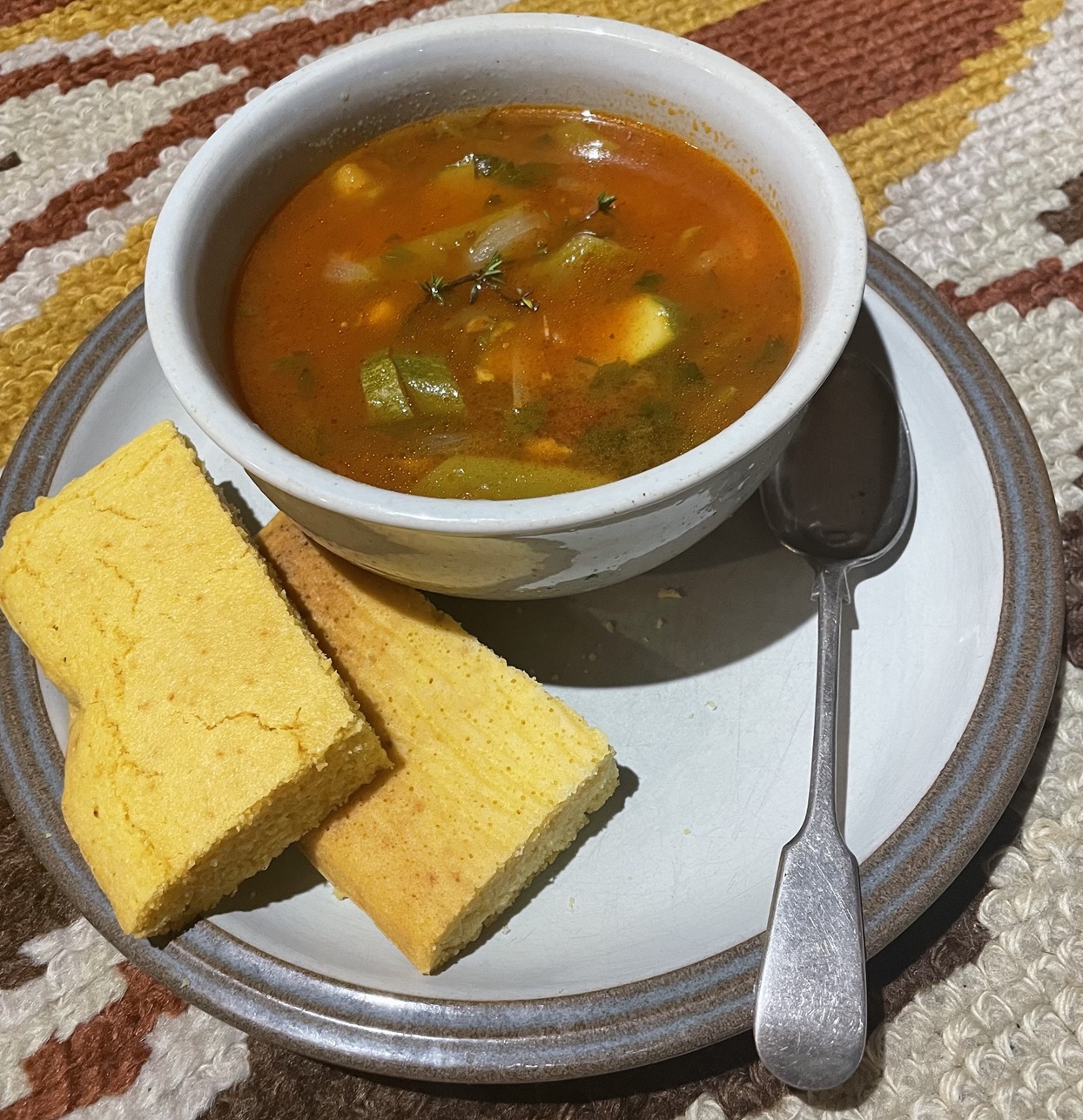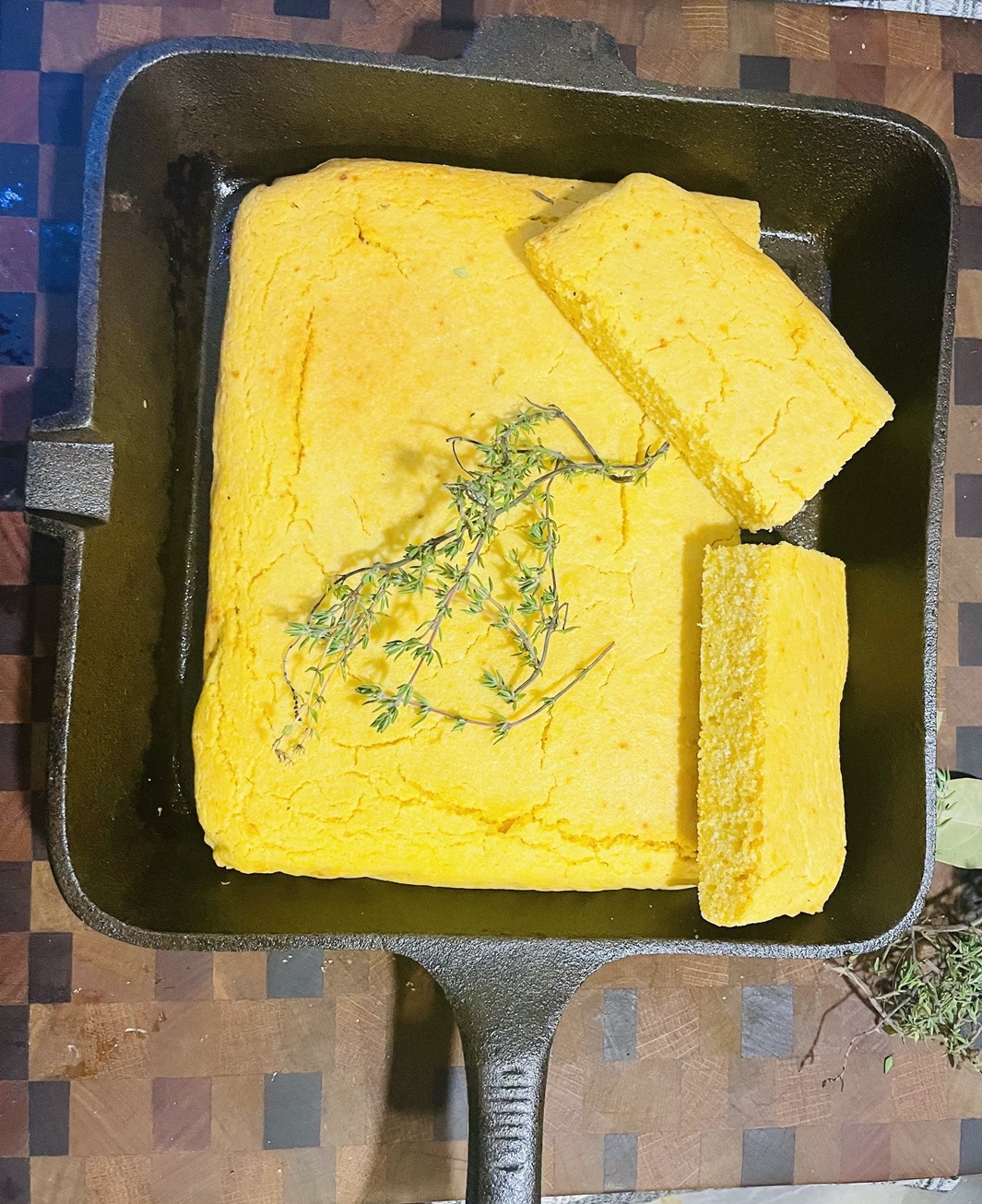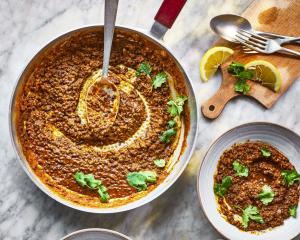
There’s something incredibly satisfying about cooking a simple, nourishing soup using vegetables you’ve grown yourself.
For me, cooking often means embracing the natural flavours of fresh produce because nothing beats the feeling of nourishing your body with what has been cultivated from the earth.
Eating fresh produce provides a nutrient and fibre dense diet that supports almost every aspect of health, from improving digestion to boosting heart and brain health. A diet rich in fruits and vegetables is an important and crucial part of a balanced and healthy lifestyle.
At this time of year, when my garden is bursting with bounty, it serves as a reminder of the beauty and purpose of living close to nature. Eating what you grow is a simple pleasure that holds meaning and purpose, making gardening more than just a hobby; it’s a way to reconnect with nature and embrace a simpler, more sustainable lifestyle.
Growing your own food means reducing your reliance on supermarkets and the often-packaged foods that come with unnecessary plastic and waste. There’s a certain empowerment that comes from knowing your meals are coming from the earth, rather than from a store shelf, a step towards reducing our personal carbon footprint.
On top of that, homegrown food is naturally more nutritious. By growing your own, or buying local grown produce, you’re opting for fresh, fibre-rich ingredients that nourish your body in ways that processed foods cannot.
These whole foods — straight from the garden to your plate — are packed with nutrients and fibre that helps with digestion and gut health, which has an effect on your overall well-being.
Another rewarding aspect of gardening is how it positively impacts mental health, as planting, tending, and harvesting allows you to slow down and step away from the constant pressures of everyday life.
It’s a form of mindfulness, a practice that lets you focus on something that’s entirely in the present moment, a deeply grounding experience. Whether you’re pulling weeds, watering plants, or watching them bloom, there’s a sense of peace that comes from simply being outside and working with nature.
It’s also a wonderful way to foster patience and resilience, unlike the instant gratification we often crave. For children, it’s an invaluable learning experience, showing them where food comes from and how to nurture living things.
Beyond its personal benefits, gardening can also play a role in the health of the planet, particularly those that follow organic or permaculture practices, by helping improve soil quality all while creating a space that nurtures the environment as much as it nurtures us.
This is a variation on the classic seafood chowder. Use any harvest vegetable with the soup-base made from tomatoes. Make it as thick or thin as you like by adding more tomatoes and potatoes, and use any crusty bread to dip and eat — it is a filling and satisfying meal.
Here I suggest cornbread, which makes a colourful combination with the red chowder.
Harvest vegetables chowder
Ingredients
2 Tbsp olive oil
2 red onions, sliced
1 clove garlic, chopped
1 stick celery, diced
1 large carrot, diced
1 large yellow pepper, deseeded and diced
3 tomatoes, chopped
1 tsp dried thyme
1 bay leaf
2 Tbsp chopped parsley
600ml vegetable stock
Salt and pepper
Method
1. Heat the oil in a medium pot and gently fry the onions and garlic until soft.
2. Add the celery, carrot and pepper and cook for about 10 minutes.
3. Add the potatoes, tomatoes, thyme, bay leaf, parsley and the vegetable stock.
4. Bring to the boil, cover, and simmer for 35-40 minutes, or until the vegetables are very tender. Mash the potato in the pot to give the soup a thicker texture.
5. Season with salt and pepper and garnish with parsley and thyme.

Corn bread
A quick and easy bread — perfect to serve with soup or bean stew.
Ingredients
Dry
2 cups cornmeal
½ cup high grade unbleached flour
1 tsp salt
½ tsp baking soda
1 tsp baking powder
Wet
1 tsp honey
1 egg
2 Tbsp olive oil
2 cups milk of your choice
Method
1. Preheat oven to 180°C. In a large bowl mix dry ingredients together, sieve the flour and baking soda and powder to make sure there are no lumps.
2. Mix wet ingredients together and add to the dry ingredients, stirring well until smooth.
3. Turn into an oiled 20cm square baking pan.
4. Bake for 25 minutes.
Healing Foods Cooking Classes:
• Thursday May 8, 6.30pm at Macandrew Bay Hall
• Tuesday May 20, 6.30pm at The Valley Project NEV
Tickets from www.hagarozri.co.nz













